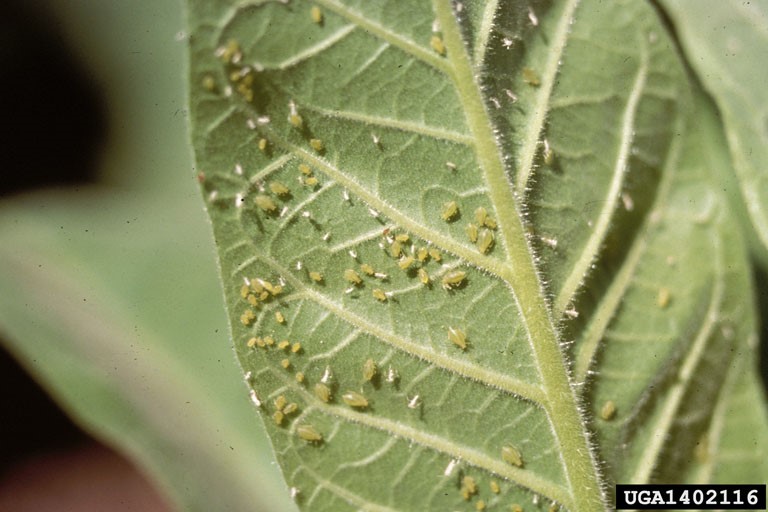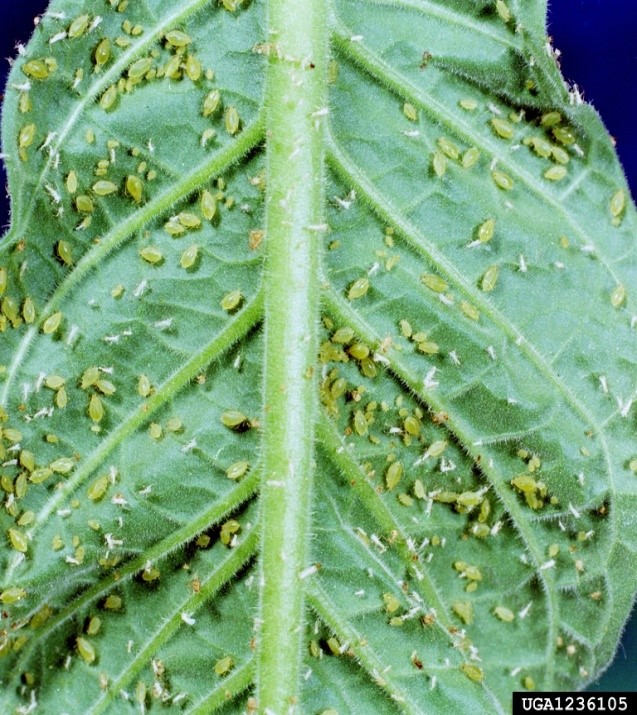
Soil Type: Tobacco requires light to medium textured, well-drained soils with a pH range of 5.5-7. Yet, the optimum soils for growing tobacco are loamy textured, properly structured, permeable, non-saline, non-alkali, with enough calcium and high potassium levels.
Land preparation: Plough 4-5 times followed by planking.
Plantation Season:
Flue Cured Virginia (F.C.V) or Cigarette Tobacco: March to September
Light Air-Cured Tobacco or Burley: March to Oct
Sun Cured Rustica Tobacco or White Patta: December to May
Layout/Spacing
- FCV and Burley: Row to row = 3 ft and Plant to plant = 2 ft
- Rustica: Row to row = 1.5 to 2.0 ft and Plant to plant = 1 ft
Irrigation: Tobacco is a leaf crop and requires more water than other crops. The field is to be irrigated every 7-10 days. In total, the tobacco crop requires 8-12 irrigations.
Suitable Areas:
- FCV: Charsada, Mardan, Swabi, Nowshehra, Malakand Agency, Buner and Mansehra
- Burley: Dir and Swat
- SCRT: Charsadda, Mardan, Nowshera and Swabi
Varieties: In KPK ‘Sufaid & Kala pata’ are most common verities. KPK: Sufaid and kala patta
- FCV: Speight G-28, K-399, different hybrid varieties
- Burley: Burley-64
- Rustica: Rustica-9, Rustica-14, Rustica-Jampur, Rustica-13
Fertilizer:
FCV: N:P:K 25-25-36 kg per acre
Rustica: NPK 4-8:16:16 kg per acre
Harvesting Time: Although tobacco can be cultivated in a variety of regions, it needs a frost-free interval of 90 to 120 days between transplantation and the last leaf harvest.
Curing: In the curing process, dried crops are gathered and buried for 10 to 15 days in a pit to allow bacteria to ferment them.
Production:
- The leaf yield of hukka tobacco is 1000-1500kg/acre.
- The leaf yield of cigarette tobacco is 800-1000kg/acre.
Diseases of Tobacco:
Black shank.
Identification: Upon transplantation, this disease manifests in both nurseries and fields. The fungus begins growing on the stem at soil level, then spreads to the pith after invading the stem’s exterior tissues.
Management
Cultural Control:
- Rotating the crop away from tobacco for at least one year will help to reduce levels of inoculum.
- Plant tobacco varieties that have resistance to the disease.
- Plant tobacco in well-draining soils and other required conditions.
- Destroy stalks and roots immediately after harvest to reduce overwintering sites for the pathogen.
Chemical Control
- Fungicides: Metalaxyl and Copper hydroxide
- The use of soil fumigants such as chloropicrin may reduce pathogen populations, and fumigant nematicides such as 1,3-dichloropropene reduce nematode populations that enhance black shank incidence and severity
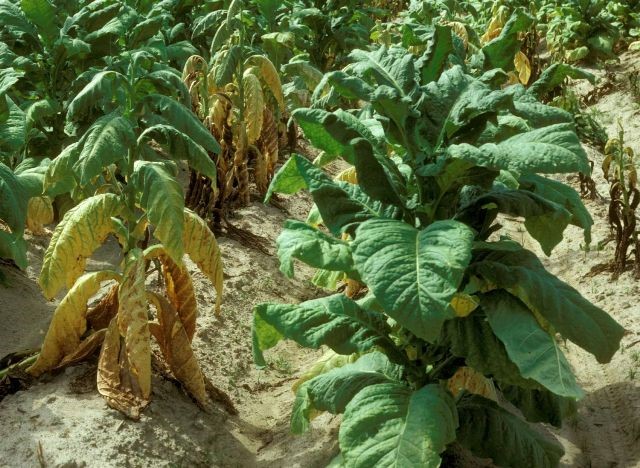
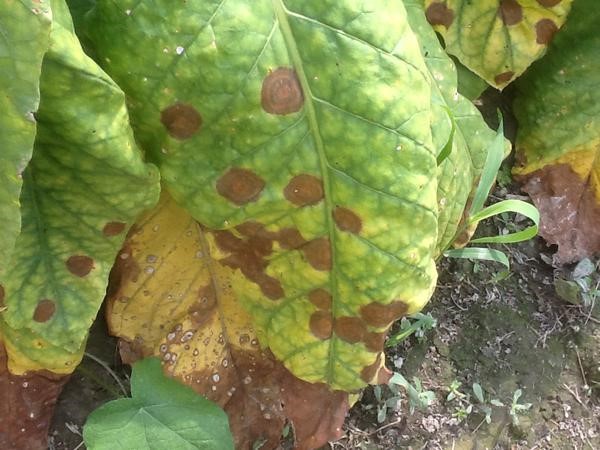
Tobacco mosaic (virus disease).
Identification: Tobacco mosaic-infected plants feature spots of bright or dark green on their leaves. The leaf’s surface and shape are unnaturally uneven, and the margins are twisted in the direction of the midrib. This virus is spread by green aphids.
Management
Cultural Control:
- Remove and destroy infected plants.
- Keep the field free of weeds which harbour the virus.
- Wash hands with soap and running water before or after handling the plants or after weeding.
- Prohibit smoking, chewing and snuffing during field operations
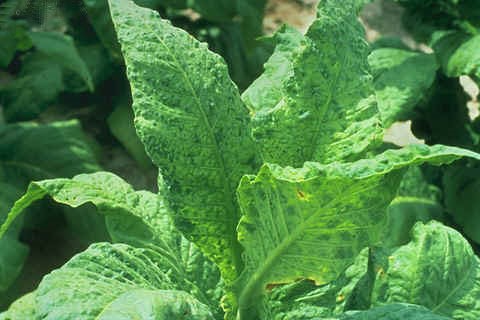
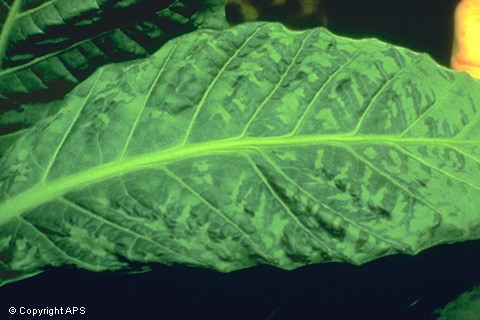
Damping off – Pythium aphanidermatum
Identification: In the nursery, the pathogen might strike the seedlings at any time. Infected sprouting seedlings wither before emerging from the ground (Pre-emergence damping off). On the stems near the soil’s surface, little water-soaked lesions initially form and quickly encircle the stem.
Management
Cultural Control
- Prepare raised seed beds with adequate drainage facility.
- Burn the seed beds with paddy husk before sowing.
- Avoid overcrowding seedlings by using recommended seed rate (1 to 1.5g/2.5m).
- Avoid excessive watering on the seedlings.
Chemical Control
Two days prior to sowing, soak the seed bed in 1% Bordeaux mixture or 0.2% Copper oxychloride.
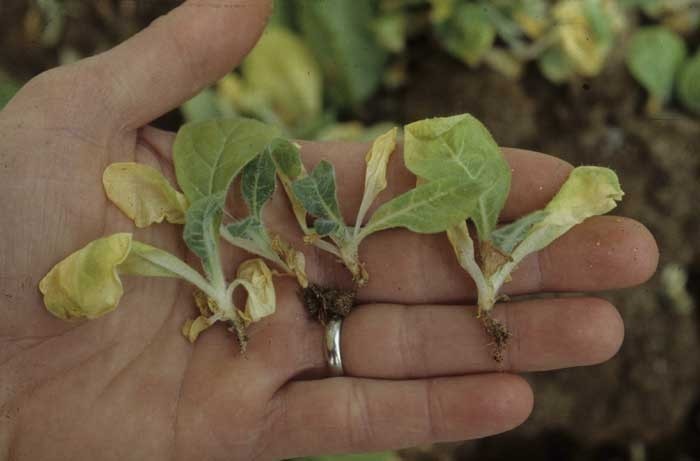
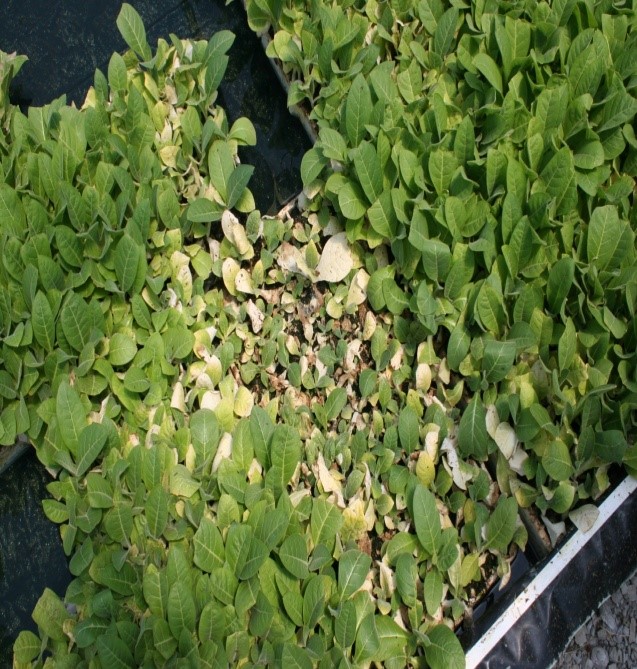
Powdery mildew – Erysiphe cichoracearum var. nicotianae
Identification: Little, white, isolated patches on the upper surface of the leaves are how the disease initially manifests itself. Subsequently, it quickly spreads throughout the lamina. The disease first manifests on the lower leaves, and as it spreads, the remaining leaves become afflicted as well. Powdery growth may occasionally be noticed on the stem.
Management
Cultural Control
• Apply balanced fertilizers.
• Avoid overcrowding plants.
• Remove and destroy all affected leaves.
• Plant early in the season so that crop escapes the cool temperature at maturity phase.
Chemical Control
• Spray Dinocap at 375 ml or Carbendazim at 500g/ha.
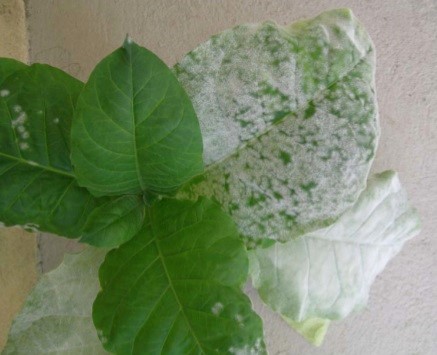
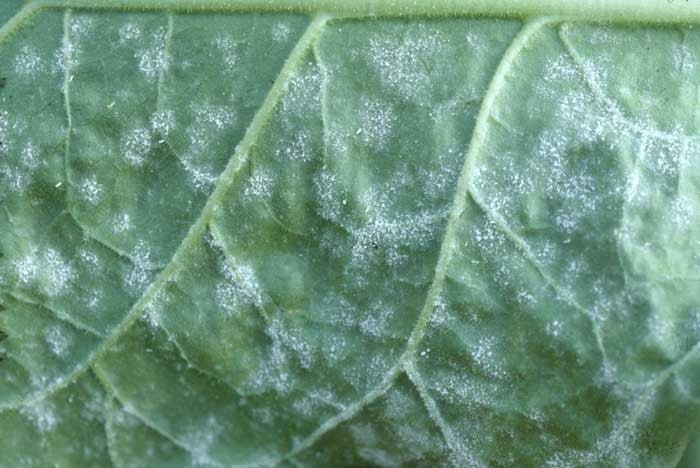
Insect Pest
Cutworm (Feltia subterrunea)
Identification: The granulate cutworm is about I 1/4 – I 1/2 inches long (31-38 mm), dark grey to sandy brown in appearance, and each segment bears unique V-shaped figures on its back and when startled, they will tightly coil up.
Management
Cultural Control
•Small cutworm larvae can be starved before crop emergence by removing winter annual weeds with cultivation or herbicides at least one to two weeks before to planting.
•Avoid putting a susceptible crop in a field that has had cutworm issues in the past.
•Avoid planting a vulnerable crop immediately after an established field of alfalfa, red clover, or meadow grass.
Chemical Control
Cypermethrin, Emamectin benzoate 5 % SG, Flubendiamide 20 WDG
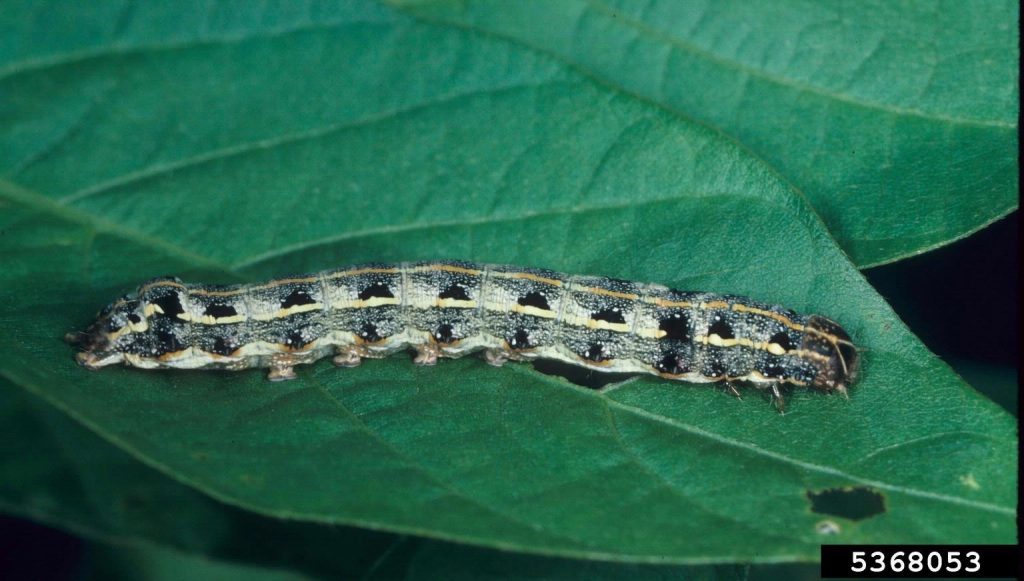
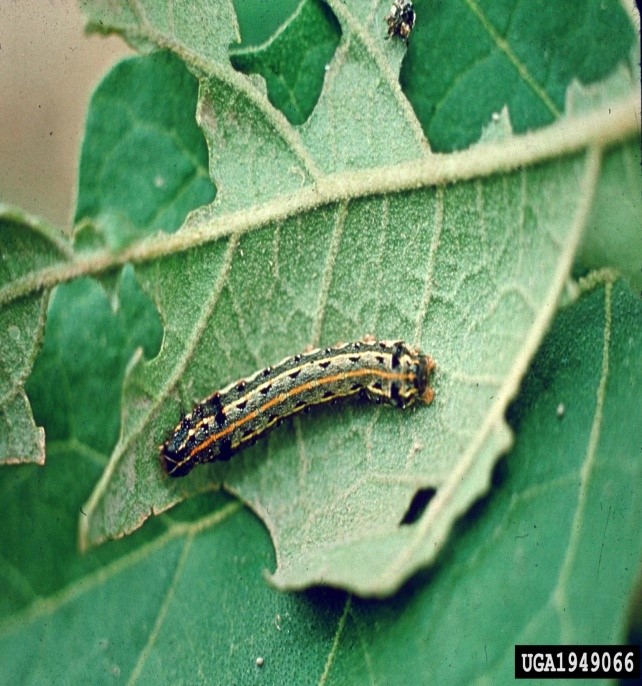
Aphid (Myzus persicae)
Identification: Aphids are tiny, soft-bodied insects that are 1/8 inch (3 mm) long and can range in colour from bright green to nearly black. Two cornicles, often known as “tail pipes,” emerge from the back. By sucking plant liquids from the tobacco leaves, they cause them to curl and severly harm the tobacco.
Management
Cultural Control
•Overfertilizing a plant might encourage the spread of aphids and exacerbate the issue.
•Insecticidal soap or horticultural oil would be the top choices for effective spraying.
Chemical Control
Lambda, Imidacloprid, Acetamiprid
